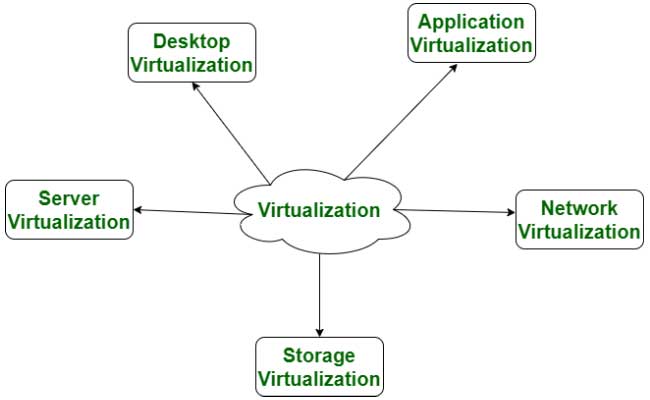Cloud Computing & Virtualization: The Future of Computing
In recent years, cloud computing and virtualization have become the buzzwords in the computing industry. Cloud computing is a model for providing computing services over the internet, while virtualization is a technique for creating virtual versions of computer hardware, operating systems, storage devices, and network resources. Both cloud computing and virtualization have transformed the way businesses and individuals use technology, and they have become a critical component of the modern computing landscape.
In this article, we will explore the concepts of cloud computing and virtualization, their benefits, challenges, and future prospects.
Cloud Computing: A Brief Overview
Cloud computing is a computing model that allows users to access a shared pool of computing resources over the internet. The resources can include computing power, storage, and software applications. Cloud computing is typically delivered as a service, which means that users can access the resources they need on-demand and pay only for what they use.
There are three primary service models of cloud computing: Infrastructure as a Service (IaaS), Platform as a Service (PaaS), and Software as a Service (SaaS). IaaS provides users with access to computing infrastructure, such as virtual machines, storage, and networking. PaaS provides users with a platform for developing, testing, and deploying applications, while SaaS provides users with access to software applications that are hosted on the cloud.
Benefits of Cloud Computing
One of the primary benefits of cloud computing is scalability. Businesses can quickly scale up or down their computing resources as their needs change, without having to invest in new hardware or infrastructure. This flexibility is particularly beneficial for businesses with fluctuating computing demands, such as those in the e-commerce or retail industry.
Cloud computing also offers cost savings to businesses. With cloud computing, businesses can avoid the upfront costs of purchasing and maintaining hardware and infrastructure. Instead, they can pay for the computing resources they use on a pay-as-you-go basis, which can be more cost-effective in the long run.
Another advantage of cloud computing is increased reliability and availability. Cloud providers typically offer high levels of redundancy and backup, which ensures that computing resources are always available and accessible to users.
Challenges of Cloud Computing
While cloud computing offers many benefits, there are also challenges associated with it. One of the primary challenges is security. Cloud providers must ensure that their services are secure and that customer data is protected from cyber threats. This requires implementing robust security measures, such as encryption, access control, and monitoring.
Another challenge is the potential for vendor lock-in. Businesses that rely heavily on cloud services may find it difficult to switch providers or migrate their data to another platform. This can limit their flexibility and create dependency on a single provider.
Virtualization: A Brief Overview
Virtualization is a technique for creating virtual versions of computer hardware, operating systems, storage devices, and network resources. By creating virtual resources, virtualization allows multiple operating systems and applications to run on a single physical server, which can improve resource utilization and reduce hardware costs.
There are several types of virtualization, including server virtualization, desktop virtualization, and network virtualization. Server virtualization is the most common type of virtualization and involves creating virtual versions of servers on a single physical server. Desktop virtualization allows multiple virtual desktops to run on a single physical desktop, while network virtualization allows the creation of virtual networks within a physical network.
Benefits of Virtualization
One of the primary benefits of virtualization is resource utilization. By creating virtual versions of resources, virtualization can improve the utilization of hardware resources, which can lead to cost savings for businesses. Virtualization also allows businesses to create multiple isolated environments on a single physical server, which can improve security and reduce the risk of hardware failure.
![]()





